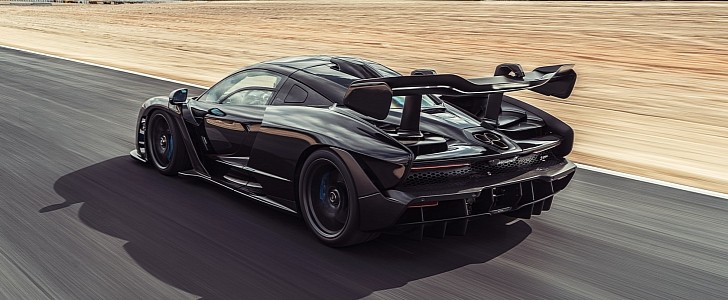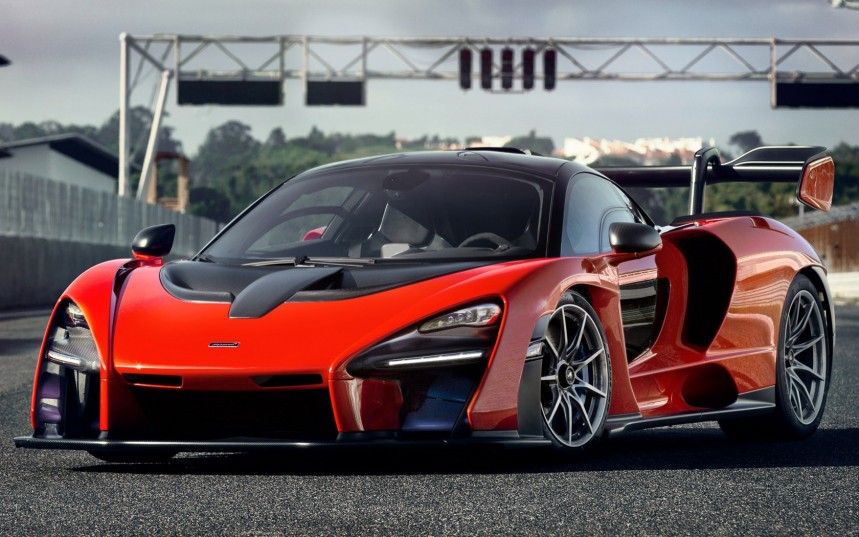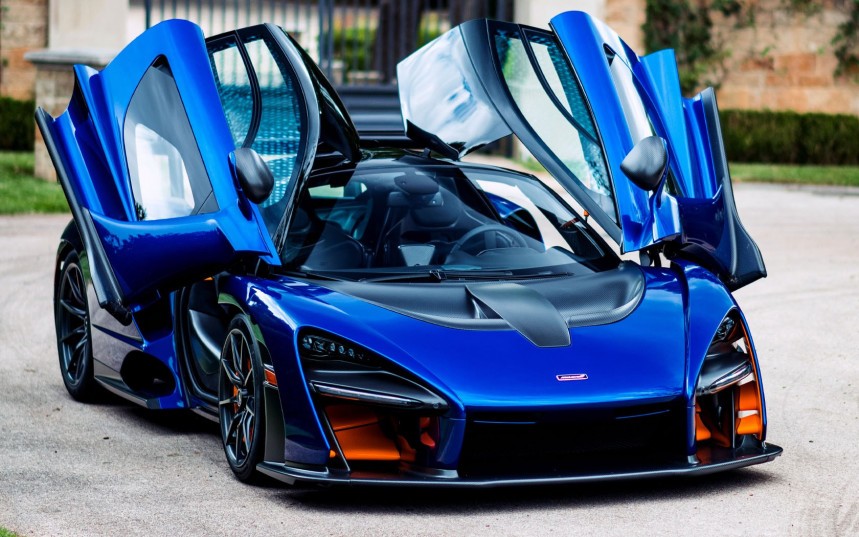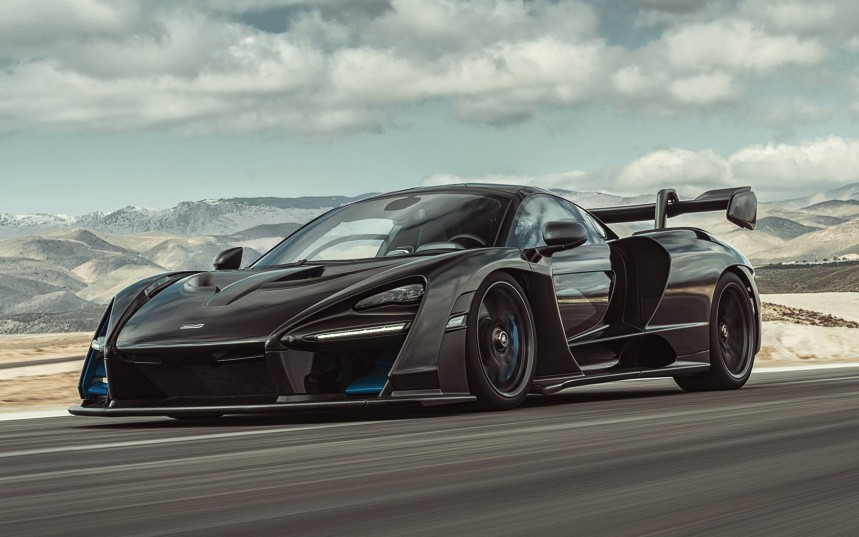There is no question about it, the Senna is the ultimate track weapon, and it does a terrific job of living up to its legendary name. It can shatter lap records with annoying ease, powered by the most advanced V8 engine McLaren has ever built.
The mid-engine supercar was officially unveiled 2018 Geneva Motor Show, joining the F1 and P1 in the British manufacturer’s Ultimate Series.
It bears the name of the renowned Formula One driver Ayrton, Senna honoring the late Brazilian’s illustrious career, which includes 35 Grand Prix wins, 3 World Drivers’ Championships, and 4 consecutive Constructor's Championship titles driving for McLaren.
The focus of development was building the best road-legal track car the world had ever seen, and since it would have Senna’s name on it, the engineers knew there was no room for compromises.
To build the best performing McLaren ever, they took the carbon fiber monocoque from the 720S and modified it so that it would become stronger but also lighter, making the Senna the lightest vehicle the British carmaker ever produced since the iconic F1.
Also taken from the 720S is the 4.0-liter engine, which has been heavily upgraded in order to achieve mind-blowing performance.
The twin-turbocharged V8 codenamed M840TR features race car technology, like a new lightweight flat-plane crankshaft and an advanced dry-sump lubrication system. Also, lighter, and stronger connecting camshafts, rods, and pistons were added to reduce the overall weight of the powertrain.
The fuel system uses two powerful pumps that can handle the huge fuel flow. One of the pumps handles most of the flow, while the second joins in when more power is needed, and the fuel demand increases.
This innovative layout uses less power than a single, larger pump or two pumps running at the same time at equal RPMs, which increases efficiency and reduces the weight of the system.
Another key element of the powertrain is the high-performance exhaust system designed specifically for the Senna. It is made from titanium and Inconel, which is one of the most advanced superalloys in production and can produce one of the most distinct growls of any supercar.
The exhaust tips exit out of the carbon fiber rear deck, under the wing, and are angled in a precise position that does not disrupt the airflow of the aero elements.
All these innovative designs combined with extensive dyno testing enables the engine to produce a maximum power output of 789 hp (589kW; 800PS), which is generated at 7,250 rpm.
It also delivers a whopping 700 Nm (516lb-ft) of torque from just 3,000rpm, with a peak value of 800 Nm (590lb-ft) being available in the 5,500-6,700rpm range.
Matted to the engine is a dual-clutch, seamless-shift, seven-speed transmission that delivers that immense power to the rear wheels.
When the Senna is in Track or Race mode, the innovative Inertia Push technology harnesses kinetic energy and delivers a boost of torque when upshifts occur, so that no momentum is lost during acceleration.
It is fitted with a launch-control function for an instant, breath-taking acceleration, being able to reach 100 kph (62 mph) from a standstill in just 2.8 seconds and 300 kph (186 mph) in an additional 16 seconds. The maximum speed of this incredible McLaren is 335 kph (208 mph).
There is no question that this car had big shoes to fill, joining the F1 and P1 in the select group of Ultimate McLarens and it earns its place without a question, delivering extreme performance and one of the best driving experiences conceivable.
The Senna is hand-built at the McLaren Production Center in Woking, Surrey, England, and production is limited to just 500 units, all of which are already sold. The final car was auctioned for $2,527,000.
It bears the name of the renowned Formula One driver Ayrton, Senna honoring the late Brazilian’s illustrious career, which includes 35 Grand Prix wins, 3 World Drivers’ Championships, and 4 consecutive Constructor's Championship titles driving for McLaren.
The focus of development was building the best road-legal track car the world had ever seen, and since it would have Senna’s name on it, the engineers knew there was no room for compromises.
Also taken from the 720S is the 4.0-liter engine, which has been heavily upgraded in order to achieve mind-blowing performance.
The twin-turbocharged V8 codenamed M840TR features race car technology, like a new lightweight flat-plane crankshaft and an advanced dry-sump lubrication system. Also, lighter, and stronger connecting camshafts, rods, and pistons were added to reduce the overall weight of the powertrain.
The fuel system uses two powerful pumps that can handle the huge fuel flow. One of the pumps handles most of the flow, while the second joins in when more power is needed, and the fuel demand increases.
This innovative layout uses less power than a single, larger pump or two pumps running at the same time at equal RPMs, which increases efficiency and reduces the weight of the system.
The exhaust tips exit out of the carbon fiber rear deck, under the wing, and are angled in a precise position that does not disrupt the airflow of the aero elements.
All these innovative designs combined with extensive dyno testing enables the engine to produce a maximum power output of 789 hp (589kW; 800PS), which is generated at 7,250 rpm.
It also delivers a whopping 700 Nm (516lb-ft) of torque from just 3,000rpm, with a peak value of 800 Nm (590lb-ft) being available in the 5,500-6,700rpm range.
Matted to the engine is a dual-clutch, seamless-shift, seven-speed transmission that delivers that immense power to the rear wheels.
When the Senna is in Track or Race mode, the innovative Inertia Push technology harnesses kinetic energy and delivers a boost of torque when upshifts occur, so that no momentum is lost during acceleration.
There is no question that this car had big shoes to fill, joining the F1 and P1 in the select group of Ultimate McLarens and it earns its place without a question, delivering extreme performance and one of the best driving experiences conceivable.
The Senna is hand-built at the McLaren Production Center in Woking, Surrey, England, and production is limited to just 500 units, all of which are already sold. The final car was auctioned for $2,527,000.











